 |
|
||||||||||||||||||||||||||||||||||
|
|||||||||||||||||||||||||||||||||||
|
|
|||
Description
Karmann Vortrex Street Above the flow around an obstacle in a channel is displayed (obstacle itself not depicted). As a static picture is not useful for displaying the motion in a fluid flow, one has to be creative to end up with a picture that looks like it displays motion. One possibility is to use so called streamlines. Everybody may know the term streamlined in the context of fast, expensive cars. A streamline can be roughly imagined like a streamer which is moving in the wind. Wait...moving, was it not supposed to be especially something for static pictures? Yes, of course. A photograph of a moving streamer shows the run of the airstream at the point in time where the picture has been taken. This is only possible since the streamer, due to its light weight, does not itself have a gross influence on the airstream. Such bands in the shape of streamers are diplayed in the above picture. In a computer simulation those bands are weightless. Streamlines have the property that in every point they consist of they have the direction of the fluid flow. In other words, every fluid particle on a streamline moves tangential to it. The color coding in the above picture signifies the speed of the stream. Red means fast, blue slow. But all this still does not explain the strange undulations in the flow. This phenomenon is called Karmann Vortex Street due to its discoverer (not inventor). Whenever an obstacle is placed in a flow in a similar way, be it a column in the wind or an island in the ocean or even an oil tanker that has sprung a leak and is loosing oil, one can always discover the same shape in the fluid motion. Even a mountain that scratches the clouds with its peak, seen from a sattelite gives the same characteristic impression. Nice, isn't it? Another way to ilustrate the motion of a fluid flow is the use of virtual particles. These particles are weightless which gives them the property of not disturbing the flow. The behave just like particles of the fluid. The only way to see their motion is by taking a movie in which the particles are displayed as small dots. This mpg-movie shows again the Karmann Vortex Street this time visualized with particles. All pictures on this page where generated with the use of a hand-written fluid simulator written in C++ and based on the finite difference approach. Actually, simulation means just producing a huge amount of data, to represent the pressure and the velocity of the fluid flow. The actual pictures where produced with the visualisation tool OpenDX. The results are quite neat. At least much better to interprete than just numbers. As an example here you can see how streamlined the founders of the University Erlangen--Nürnberg Friedrich and Alexander are. Due to the fact that both faces overlap, it is the task of the viewer to find out who is the one with the characteristic nose. 
Friedrich-Alexander Putting a sphere in a flow yields the following flow profile which was likewise visualized by means of streamlines. 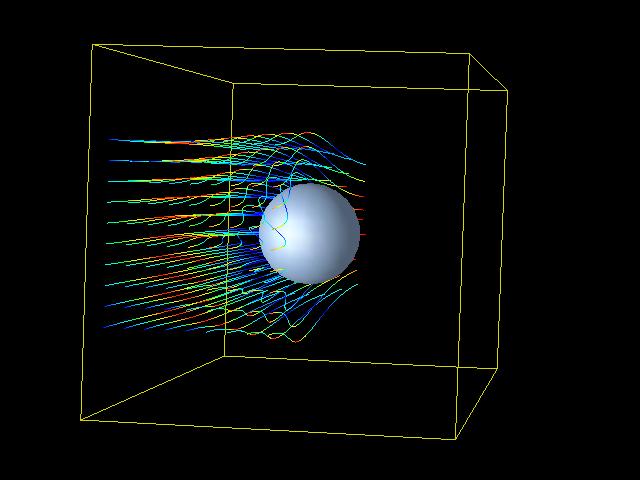
flow around a sphere The really interesting flow shapes are the result of more complex geometries. 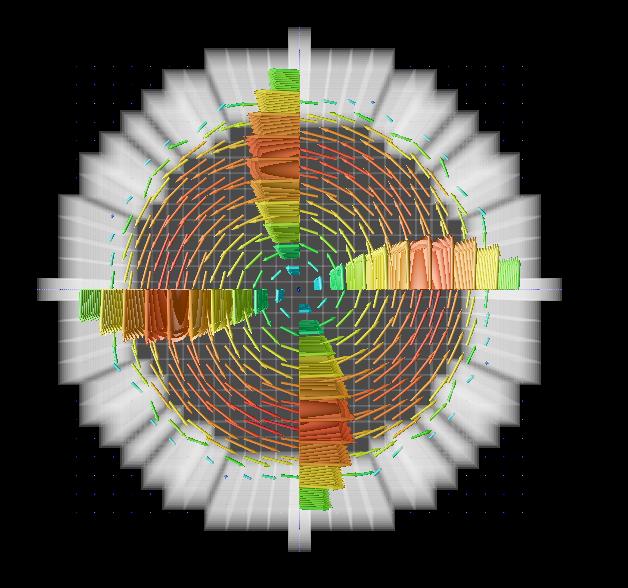
flow in a teacup There are probably quite a number of people who may have at some time wondered why after stiring in a teacup the tealeaves on the bottom of the cup move radial towards the center and not in the oposite direction. For me et least, there didn't seem to be an obvious explanation, since, e.g., while going through a curve the resulting force tries to push the driver towards the outside of the curve and not to the inside. What applies to us driving a car is supposed to be the same for tealeaves, assuming, of course, that nature is fair. In fact, it is. The reason for the odd behaviour of the tealeaves is that they behave the same as the above mentioned particles. They follow the movement of the surrounding fluid. Therefore the motion of the fluid must have a component that points towards the center of the cup. The tea performes a circular movement and at the same time it moves towards the center which causes a tealeaf to move on a spiral track. The source of this strange movement is not so easy to explain, but the movement itself can be demonstrated in a simulation. The following picture shows streamlines in the flow on the bottom of a cup. 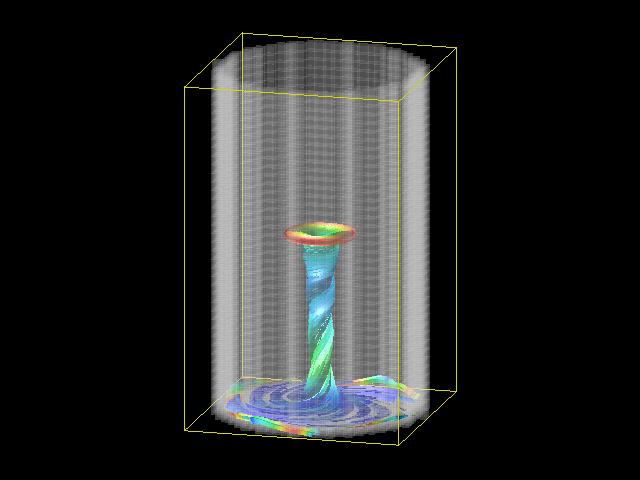
fluid flow at the bottom of a stirred cup The streamlines start at the bottom of the cup and move towards the center of the cup where they are deflected by the upward moving flow. 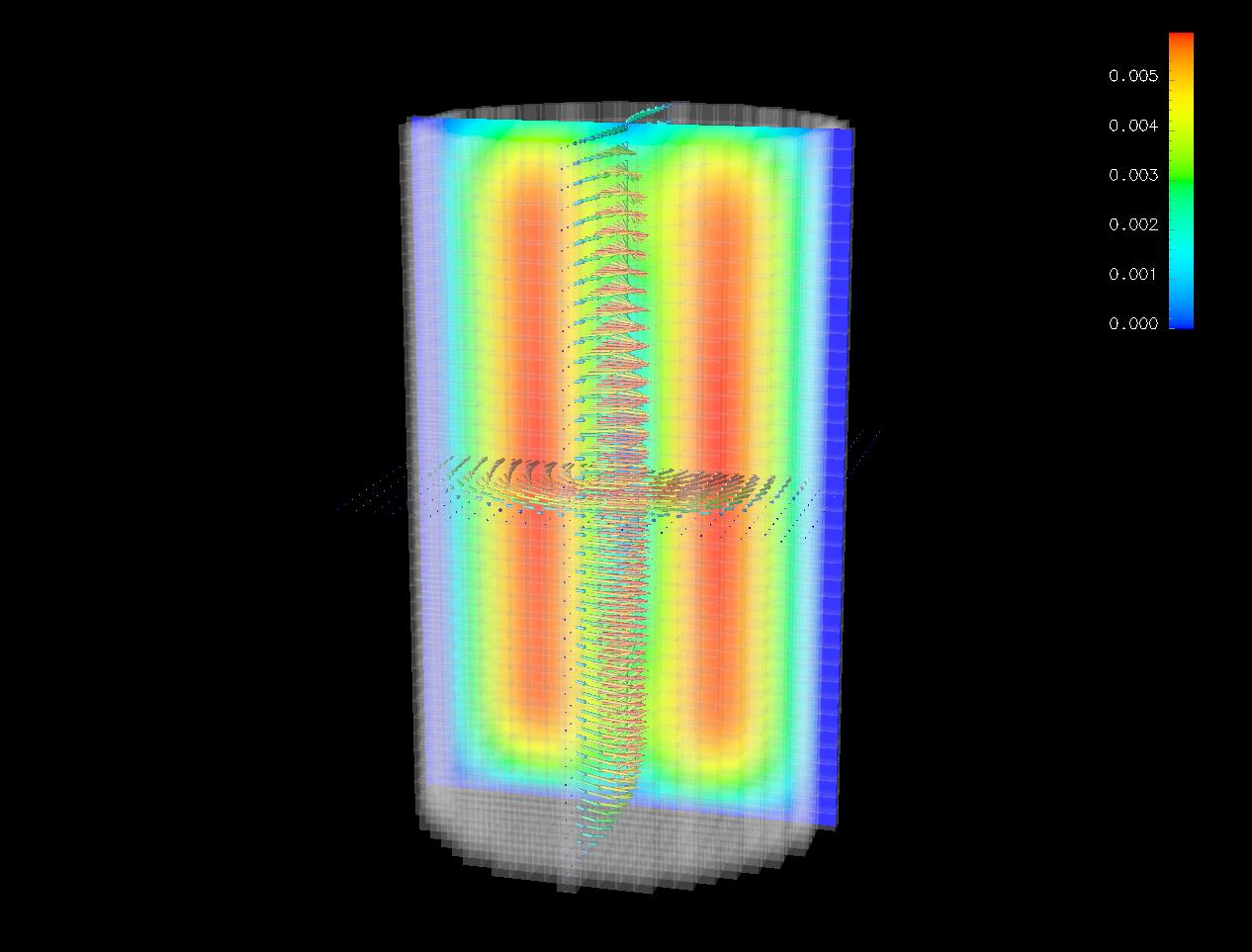
cup in intersection view Cutting vertically right through the center of the cup, which of course is only possible on the computer, shows the velocity profile. Red signifies fast, blue slow motion. At the bottom and at the left and right edges of the cup (in the cross-section) there is no movement at all, because there, friction with the wall prevents th flow. To make the simulation easier I supplied the cup with a cover. In a real experiment this would make stiring impossible. In a real experiment, the motion in the cup could therefore be caused by putting the cup on top of a turning record player. When the player is stopped the rotating motion of the fluid continues. But please do not take your Dad's expensive record player. Ok, finally we have the flow resulting from blowing a panpipe. To make matters easier, it will be represented as one tube. This already takes some time to simulate... 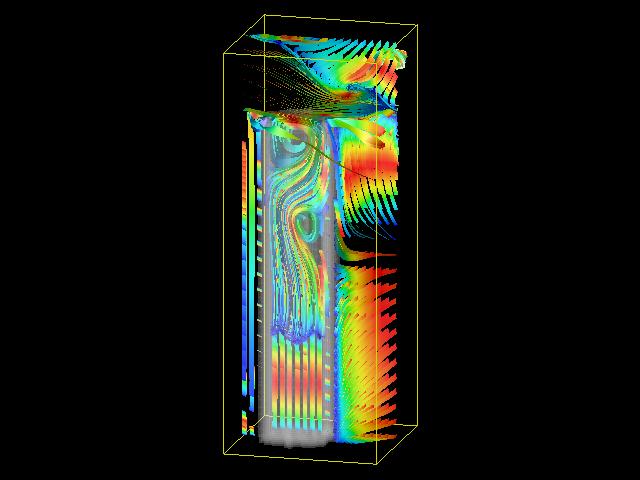
panpipe The pipe-simulation is also available as a mpg-movie (10 MB altogether!!). Contact |
| Last modified
2.11.2012 ( |